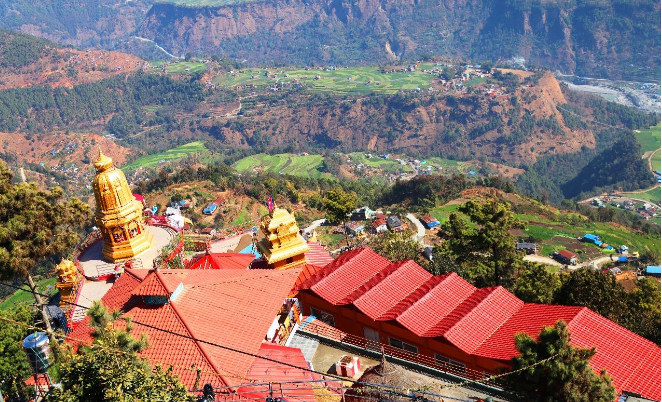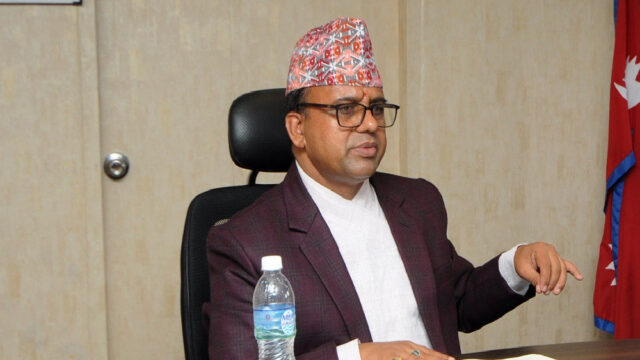The Panchakot region, once a barren hill, has emerged as a vibrant religious tourism destination. Just a decade ago, few could have imagined that this desolate area would become a hub for tourism and spirituality. Today, its landscape is adorned with various structures that attract both domestic and international tourists.
Historically, Panchakot is believed to have held significance during the Baise and Chaubise Kingdoms but had deteriorated over time due to neglect. Thanks to the vision of Muktinath Peethadheeshwar Swami Kamalnayanacharya, Panchakot has been revitalized as an integrated religious site. The site now boasts a range of attractive facilities and structures that cater to spiritual seekers and visitors alike.
Govinda Acharya, a resident of Sim village in Baglung Municipality–6, explained that Panchakot’s recent designation as one of Nepal’s “100 Tourist Destinations” has further boosted its popularity. “With structures developed on Tarajal Hill, Panchakot has become world-renowned,” Acharya noted, emphasizing how the government’s recognition has enhanced its status.
Panchakot’s inception is linked to Swami Kamalnayanacharya, who envisioned it during a yagna in 2013. Swami’s vision was supported by locals who shared his desire to transform this barren hill into a religious sanctuary. In the following year, structures, including the 108-foot World Peace Kalash and several other religious monuments, began to take shape on 90 ropani of land, turning Panchakot into an internationally recognized site.
The Panchakot complex combines the sacred sites of Tarajal, Karikot, Majhkot, Rangrangkot, and Sansarkot into one. Investments from local, provincial, and federal governments have increased in recent years, supporting infrastructure and site enhancements. Ward Chair Rudra K.C. confirmed that the Panchakot structure was built on Tarajal Hill. At the same time, other sites like Karikot, Majhkot, and Rangrangkot have received basic infrastructure improvements, including foot trails and resting shelters for visitors.
With an investment exceeding NPR 500 million over the last decade, Panchakot has seen significant development. Swami Kamalnayanacharya, who led the site’s transformation, revealed that the goal was to make Panchakot a religious center, with further plans in progress. “This region, carved by the Kali Gandaki River, has been brought to life with contributions from many, including government funds,” Swami stated. He added that high-profile visits from Nepal’s president and prime minister underscore Panchakot’s growing prominence.
In recent developments, a grand bell, “Maha Ghanta,” made from five metals—gold, silver, copper, brass, and iron—was installed at Panchakot earlier this year. The installation of Maha Ghanta fulfills a vision eight years in the making, yet Swami suggests that Panchakot’s full potential will unfold over the next decade.
Already, Panchakot hosts several iconic structures such as the Garuda Stone, temples for Goddess Gandaki and Lord Hanuman, and facilities like a meditation hall, guest accommodations, and a Guru Kanya school for girls. Supported by donations, proceeds from religious ceremonies, and substantial government funds, these facilities reflect Panchakot’s spiritual appeal and infrastructural growth.
Located at an elevation of 1,750 meters, Panchakot also features three-story guesthouses and a girls’ Gurukul school, alongside a path with railings for easy access. Former Prime Minister Sushil Koirala laid the foundation stone on February 21, 2014, setting the stage for Panchakot’s transformation into a religious landmark.
Today, Panchakot stands as a testament to community effort and visionary leadership, drawing visitors worldwide to witness its beauty, spirituality, and cultural significance.
Source: RSS






